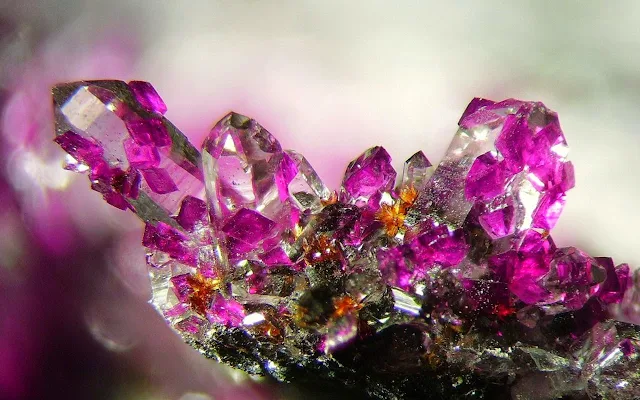Spherocobaltite Information
Sphaerocobaltite is a beautiful and colorful mineral. It is also known as cobaltocalcite and cobaltian-calcite. However, these names are often used when referring to calcite that has an appreciable amount of cobalt in its structure as an impurity. The result of the presence of the cobalt is that the calcite is colored a pale pink. In pure sphaerocobaltite (most examples contain a small but significant percentage of calcium), the coloring effect is magnified.
The sometimes deep rose-red to pink color is very attractive and unique. It is easy to confuse sphaerocobaltite with two other carbonates; rhodochrosite and stichtite, because all three are described as red to pink minerals. However, side by side the color difference is obvious, as sphaerocobaltite has a more "hot pink" color than the redder pink of rhodochrosite or the more purple-pink of stichtite. Confused? Well, you just need to see them.
Sphaerocobaltite, fortunately, is further distinguished by its occurrences with cobalt bearing veins that have been affected by carbonated waters. It is found as crusts and small crystals in many cobalt ore locations around the world, but it is the mines of Shaba, Zaire that have produced the most outstanding specimens. Some specimens are draped with acicular dark green malachite crusts and the combination makes for a very colorful specimen.
Properties of Spherocobaltite
- Formula: CoCO3
- Member of: Calcite Group
- Color is red to pink.
- Luster is vitreous.
- Transparency crystals are transparent to translucent.
- Crystal System is trigonal; bar 3 2/m
- Crystal Habits include rhombohedrons and scalahedrons, but large crystals are rare. Often, any large crystals are sphaerocobaltite intergrown with calcite, coloring the whole crystal pink. Also botryoidal, globular, stalactitic and as crusts.
- Cleavage is perfect in three directions, forming rhombohedrons.
- Fracture is uneven.
- Hardness is 4.
- Specific Gravity is approximately 4.2 (above average for translucent minerals).
- Streak is pale pink.
- Associated Minerals are calcite, malachite, cobaltite and dolomite.
- Other Characteristics: red or pink and white banding in massive forms and effervesces easily with dilute acids.
- Notable Occurrences include Shaba, Zaire; Saxony Germany and from other secondary cobalt ore locations.
- Best Field Indicators are color, crystal habit, reaction to acid, associations with cobalt ore deposits, and cleavage.






%20(1).webp)


